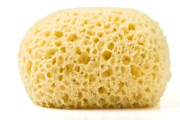We view the human body in terms of a skeleton, structurally housing our muscles, organs, circulatory and nervous systems, covered by our largest organ – our skin. There are other systems in the human body that are relevant, but a tissue that is somewhat overlooked is the fascia. The medical schools used to strip away the fascia of a cadaver and study the Skeletal and Muscular Systems; that is no longer the case. It is gaining importance in the health field, both in its significance and means of treatment. Fascia is a band or sheet of connective tissue located throughout the body, classified by anatomical location and function. There are three types or layers: Superficial Fascia, which blends with the various tiers of the skin; Visceral Fascia, which encloses and suspends the organs in the abdominal cavity and Deep Fascia, which stabilizes and separates muscles , bones, blood vessels and nerves throughout the body. For our purposes, we will discuss the Deep Fascia.
Fascia is composed primarily of collagen fibers, arranged in a pattern that allows for flexibility and resistant pull. The Deep Fascia is a dense fibrous tissue that connects muscles to bones (tendons), bones to bones (ligaments) and cushions the vertebrae (discs). So it must be durable and resilient in order to maintain this function for the skeletal system. With regard to muscles, the fascia encloses the muscle and keeps it in the correct position. It also separates the muscles, so they can work independently and in conjunction with each other. The fascia provides a hydrated or lubricated surface in which the muscles glide along each other.

It may be noted in Fig 1 that the fascial webbing is one continuous network, stretching from the plantar fascia in the feet, up the length of the body to the skull. It takes on different densities and functions, depending on the location. For example, the Gastrocnemius muscles in the calf attach to the femur, then the fascial tissue proceeds to weave to the dense properties of the Achilles tendon ( and in turn, the tendon attaches to the calcaneus bone).
And this brings up several ways that fascia affects our athletic performance and our daily routine activities. A component of this tissue is water and it must be hydrated regularly.
Fig 2 is a simplistic, yet necessary analogy of a sponge in which the differences between a wet, springy sponge and a dry brittle sponge are striking. A hydrated sponge is resilient and effective, while a dry sponge is hard and more susceptible to being broken. Another aspect of fascia is that the body must maintain movement, which coincides with the joints being lubricated with synovial fluids and maintaining hydration; an inactive lifestyle hinders the effectiveness of the fascia. Stretching the fascia enables the encased muscles to move more easily. The lack of stretching the muscles results in limited range of motion and freedom of movement.

The remedies for maintaining an efficient connective tissue system include the regimen of regular hydration, the concept of getting up and moving around (as a change of pace during sedentary periods of time) and stretching of the muscles and in turn, stretching of the fascia. For self-care, a foam roller is a tool that can be used on easily accessible fascia, such as the IT Band (Iliotibial Band, which is a band of connective tissue located between the side of the hip and the knee). Lastly, a massage therapist can assist in stretching and massage in areas that a person cannot access themselves.
References
- https://en.wikipedia.org/wiki/Fascia
- http://breakingmuscle.com/mobility-recovery/the-top-5-ways-fascia-matters-to-athletes
- http://www.runnersworld.com/injury-treatment/understanding-your-fascia
- http://stretchcoach.com/articles/stretching-fascia/
Illustrations
- Fig 1.:http://www.sportsrehabexpert.com/public/583.cfm
- Fig 2.: http://breakingmuscle.com/mobility-recovery/the-top-5-ways-fascia-matters-to-athletes
This article/video is for educational purposes only; do not attempt without your physician’s clearance. If you are in pain or injured, see your physician.
Copyright © Vidal Sports LLC 2018







